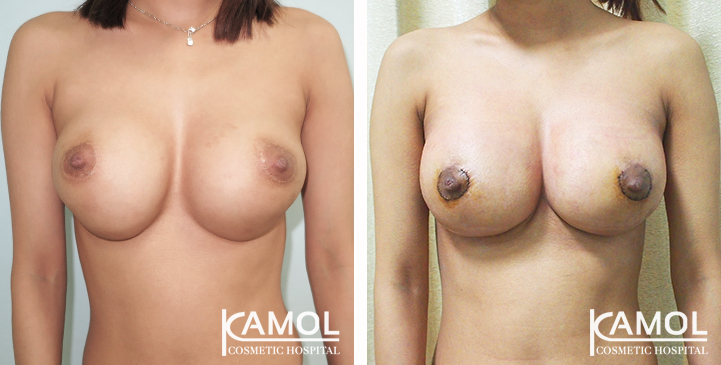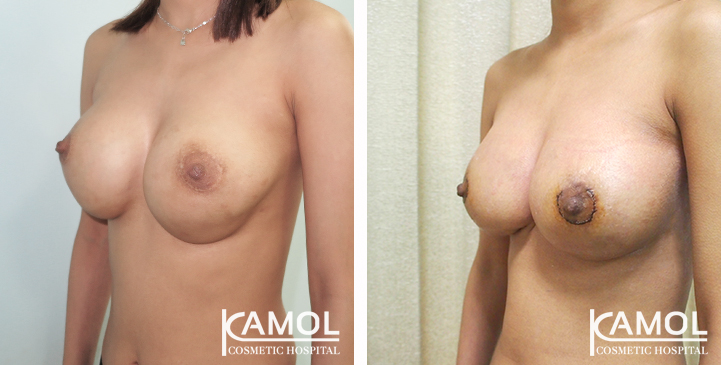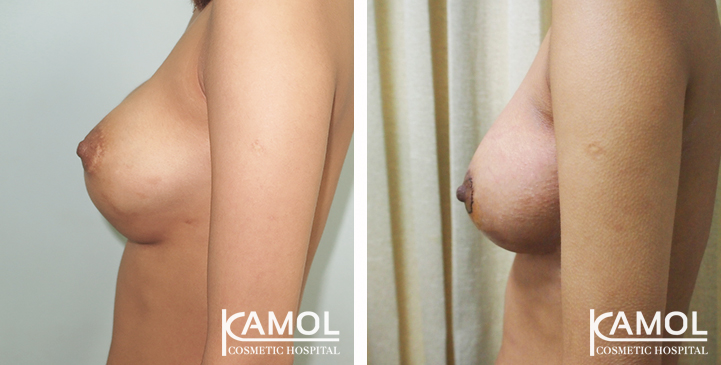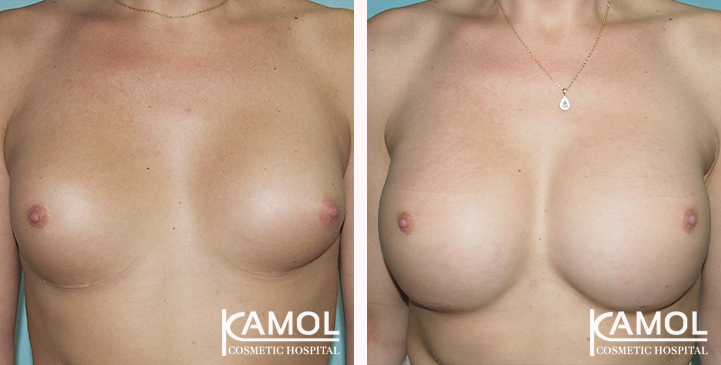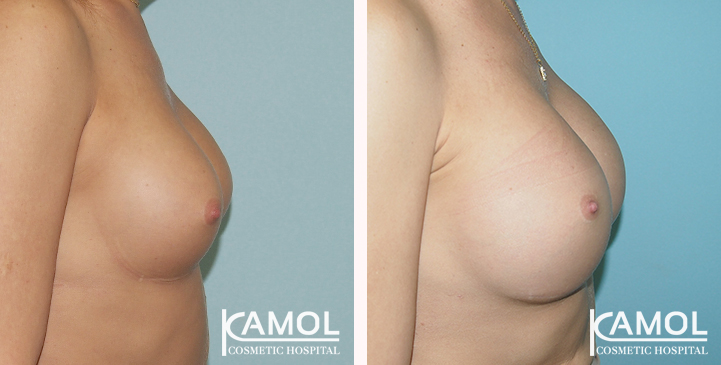Capsular Contracture Revision
Capsular contracture is a common complication that may occur after breast augmentation surgery. It occurs when the tissue around the breast implant becomes firmer, often as a result of the body's immune system reacting to the foreign material of the implant. This firmness can cause the breast to feel hard and appear abnormal in size and shape.
There are four grades of capsular contracture according to the Baker classification system:
- Grade I: The breast is soft and appears natural in size and shape.
- Grade II: The breast is slightly firm but appears normal.
- Grade III: The breast is firm but appears abnormal.
- Grade IV: The breast is hard, painful to touch, and appears abnormal.
If you experience capsular contracture and are experiencing discomfort or dissatisfaction with the appearance of your breasts, revision surgery may be necessary. This may involve removing the scar tissue (capsule) that has formed around the implant and/or replacing the implant with a new one.


There are several potential causes of a capsular contracture, including:
1 - Surgeon technique: The way in which the surgery is performed can affect the likelihood of a capsular contracture. Factors such as contamination and the development of a hematoma (a collection of blood outside of a blood vessel) during surgery can increase the risk of a capsular contracture.
2 - Implant material: The quality and type of implant used can also play a role in the development of a capsular contracture. Some materials may be more prone to causing this complication than others.
3 - Patient factors: The individual patient's immune system and their reaction to the foreign material of the implant can also contribute to the development of a capsular contracture.
It's important to speak with your surgeon about the potential risks and complications of breast augmentation surgery, including the possibility of a capsular contracture. Your surgeon will be able to discuss the steps that can be taken to minimize the risk of this complication occurring.
There are several steps that can be taken to correct this condition.
1 - Capsulotomy: This is a surgical procedure in which the surgeon expands the capsule around the implant. This technique is typically used for mild to moderate cases of capsular contracture, or grades 1-2. During the procedure, the surgeon will make an incision in the capsule and gently stretch it to allow the implant to move more freely.
2 - Capsulectomy: This is a more invasive procedure in which the surgeon removes the entire capsule that has formed around the implant. This technique is typically used for severe cases of capsular contracture, or grades 3-4. The surgeon will make an incision in the breast and remove the capsule, replacing the implant if necessary.
Both of these procedures are typically done under general anesthesia and may require a short hospital stay. It is important to follow the surgeon's post-operative instructions carefully to ensure proper healing and minimize the risk of complications.
Before and After Capsular Contracture Revision Surgery
